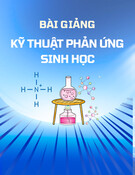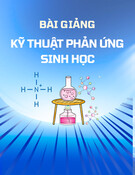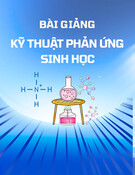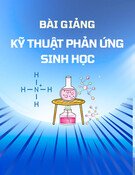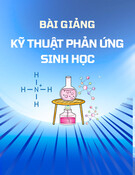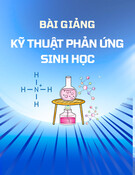
KỈ YẾU HỘI NGHỊ SINH VIÊN NGHIÊN CỨU KHOA HỌC NĂM HỌC 2013-2014
139
CALLUS INDUCTION AND PLANT REGENERATION IN VITRO FROM LEAF
EXPLANTS OF MYCETIA BALANSAE DRAKE
Dang Thi Thao, Class K60A, Faculty of Biology
Supervisor: Assoc. Prof. Dr. Nguyen Xuan Viet
and MSc. Vu Thi Bich Huyen
Abstract: Mycetia balansae Drake, the plant distributes in Vietnam and Laos, contains sweet-tasting
triterpenes and triterpene glycosides which were discovered and published the patent by Jakob and
collaborators (WIPO, 2012). This plant reproduces by seed but rarely find plantlets in nature, so very
difficult to develop planting for commerce. This is first time, the Mycetia balansae Drake was
multiplied by using callus culture technology from leaf explants. The seedlings were served as initial
explant materials. The sterilized seeds in 20% NaOCl solution for 5 min, then in a solution of 10%
H2O2 for 3 min, showed the highest germination rate of seeds (83.33%). The maximum callus
induction was recorded on MS medium supplemented with 2 mg L-1 BAP; 0.2 mg L-1 NAA; 0.5 mg L-1
2,4-D, and the plant regeneration ratio was 53.33% in MS medium supplemented with 2 mg L-1 BAP
and 1.5 mg L-1 Kinetin. The highest percentage of direct regeneration was noticed in the MS medium
supplemented with 2 mg L-1 BAP; 0.2 mg L-1 NAA; 30 g L-1 sucrose; 7g L-1 agar. The regenerated
shoots were rooted in MS medium and successfully transplanted to the land, and watered with 1/10
MS solution in 8 weeks, the highest survival rate of plantlet was 83.63% (plantlets were transplanted
from September to December).
Key words: Callus, direct regeneration, Mycetia balansae Drake, seed, in vitro plantlet.
I. INTRODUCTION
Mycetia balansae Drake (Ra co pua in Vietnamese) was classified in Rubiaceae family
and distributed in some provinces such as Vinh Phuc (Tam Dao), Ha Noi (Ba Vi), Lam Dong
(Lang Hanh), Dong Nai (Bien Hoa, Gia Ray) [3]. This plant has only been used traditionally in
some medicines related to kindney diseases, or replacing for Glycirrhiza uralensis in the
dispensing drugs. It also has been widely used in medium of children‟s cough. In 2012, WIPO
published the patent of Jakob and collaborators, "Orally consumable formulations comprising
certain sweet – tasting triterpenes and triterpene glycosides”. According to the report, the plant
extract contains new triterpenes and triterpene glycosides which make it to have a distinctive
sweet-tasting [4]. Seed propagation of Mycetia balansae Drake is not easy, due to low
germination rate and low viability, so it is very rare in nature. In order to conserve this plant as
well as to use for commercial purposes in cooperation with Tue Linh Co.Ltd, providing a large
number of plants is necessary and in vitro tissue culture technology could be solve this
problem. Therefore, the study on callus induction and plant regeneration in vitro from leaf
explants of Mycetia balansae Drake was carried out.

KỈ YẾU HỘI NGHỊ SINH VIÊN NGHIÊN CỨU KHOA HỌC NĂM HỌC 2013-2014
140
Figure 1. Mycetia balansae Drake in nature
II. MATERIAL AND METHODS
1. Material
Seeds of Mycetia balansae Drake were used as initial materials. It was collected
from the Tam Dao mountain of Vinh Phuc provice by Tue Linh Co.Ltd.
2. Methods
2.1. Seed sterilization and seed germination
Seeds of M. balansae were soaked in 70% ethanol for one minute; rinsed three times in
sterile distilled water; followed by treating surface sterilized by immersed in the solutions of
0.1% HgCl2, 10% H2O2, or 20% NaOCl. Finally, they were rinsed three times with sterile
distilled water. Sterillized seeds were placed on germination MS medium supplemented with
0.5 mg L-1 BAP; 30 g L-1 sucrose; 7 g L-1 agar; pH = 5.6 – 5.8; Cultures were maintained at
25 ± 2oC in the dark for 6 weeks.
2.2. Callus induction
In vitro leaf pieces (5 mm × 5 mm) were cultured on MS medium supplemented with 2
mg L-1 BAP; 0.2 mg L-1 NAA; 2,4-D (0 – 2 mg L-1); 30 g L-1 sucrose; 7 g L-1 agar, pH = 5.6
– 5.8. In order to callus induction, the cultures were incubated at 26 ±1 ºC in the dark
conditions. Callus formation efficiency was recorded after 6 weeks of incubation.
2.3. Shoot regeneration
Calli were cultured on MS medium contained 2 mg L-1 BAP and Kinetin (0 – 1.5 mg
L-1); 30 g L-1 sucrose; 7 g L-1 agar, pH = 5.6 – 5.8. Culltures were maintained at 25 ± 20C
under 16/8 h photoperiod for 8 weeks. The regenerated shoots were subsequently
transferred on MS medium for rooting.

KỈ YẾU HỘI NGHỊ SINH VIÊN NGHIÊN CỨU KHOA HỌC NĂM HỌC 2013-2014
141
2.4. Transplanting
In vitro plantlets were transplanted into the pots containing substrates in the garden
and watered with some mineral solutions (1/10 MS solution; 4/10 MS solution; water) for
8 weeks. The substrates GT01; GT02's Quang Minh Co., Ltd; Thuy Cam Co. Ltd; mixture
of garden soil and sand (1:1) and garden soil: sand: coir (2:1:1 ) were signed in PS01,
PS02, PS03, PS04, PS05 in this experiment.
3. Results and Discussion
3.1. Seed sterilization and seed germination
Seed size of M. balansae is very small, so sterilization time and chemical types must
be suitable with seed germination. The result of seed sterilization was recorded after 6
weeks of culture and represented in table 1 and figure 2.
The data of table 1 shows that seed sterilization in HgCl2 solution resulted in no
germination. This result can explain that the seeds of Mycetia balansae Drake are very
sensitive with HgCl2. The loss of germination ability of seeds which was sterilized by
HgCl2 may relate to the toxicity of HgCl2.
In sterilization with only a chemical type one time, neither H2O2 solution nor NaOCl
solution could have high clean explant rates. Sterilization with 20% NaOCl solution (5
min) had a considerable effect to seeds (infect explant percentage dropped to 46.47%) but
the rate of seed germination was very low (21.43%).
Sterilization with only one chemical two times gave higher germination effect.
Sterilization with 20% NaOCl solution (5 min and 3 min in SS9 solution) obtained high
sterilization effect (infect explant percentage 0%) but the rate of seed germination was just
24.33%. Sterilization in two times of 10% H2O2 solution (5 min; 3 min in SS10 solution)
was more effective than that of 20% NaOCl solution with germination rate 66.67%.
Effect of seed sterilization was the highest in the condition which contains two
chemical (NaOCl in 5 min and H2O2 in 3 min); in this condiction, the highest germination
rate was 83.33%; infect explant percentage was 0%. Therefore, the combination H2O2 with
NaOCl obtained high clean explants rate and high germination percentages. Plantlets were
used as initial material.
Figure 2: Fruits and seeds (A & B), germinated seeds (C) and plantlets
on the MS medium with 0.5mg L-1 BAP (D)

KỈ YẾU HỘI NGHỊ SINH VIÊN NGHIÊN CỨU KHOA HỌC NĂM HỌC 2013-2014
142
Table 1. Effect of chemicals and strerilization time to seed germination
Solutions
Sterilization time (min)
No. of
seeds
Clean explants rate
Infect
explant
rate (%)
NaOCl
(20%)
H2O2
(10%)
HgCl2
(0.1%)
Germinat
-ion (%)
No
germina-
tion (%)
SS1
3
300
0.00
0.00
100.00
SS2
5
300
21.43
31.90
46.67
SS3
3
300
0.00
0.00
100.00
SS4
5
300
0.00
0.00
100.00
SS5
3
300
0.00
76.67
23.33
SS6
5
300
0.00
100.00
0.00
SS7
8
300
0.00
100.00
0.00
SS8
12
300
0.00
100.00
0.00
SS9
5
300
24.33
75.67
0.00
3
SS10
5
300
66.67
10.00
23.33
3
SS11
5
300
0.00
100.00
0.00
3
SS12
5
3
300
83.33
16.67
0.00
SS13
5
3
300
0.00
100.00
0.00
SS14
5
3
300
0.00
100.00
0.00
3.2. Callus induction
Leaf pieces were cultured on MS medium supplemented with 2 mg L-1 BAP; 0.2 mg
L-1 NAA; 2,4-D at concentrations (0; 0.5; 1; 2 mg L-1); after 6 weeks of culture, the result
was shown in table 2 and figure 3.
Table 2. Effect of 2,4 –D concentrations on callus induction
MS supplemented with 2 mg L-1
BAP; 0.2 mg L-1 NAA and 2,4-D
No. of
explants
Induction
rate of
callus (%)
Status of callus
2,4-D (mg L-1)
0.0
60
100
Direct shoot
regeneration
0.5
60
100
White, tough, porous
calli
1.0
60
0
Small pieces of leaf
2.0
60
100
Friable calli

KỈ YẾU HỘI NGHỊ SINH VIÊN NGHIÊN CỨU KHOA HỌC NĂM HỌC 2013-2014
143
Figure 3. Callus and shoots of direct regeneration in MS medium supplemented
with 2 mg L-1 BAP; 0.2 mg L-1 NAA and 2,4-D
A. Without 2,4- D (direct regenerated shoots)
C. 1 mg L-1 2,4-D (no callus)
B. 0.5 mg L-1 2,4-D (white, tough, porous calli)
D. 2.0 mg L-1 2,4-D (friable calli)
Data on table 2 shows that the induction rate of callus in MS medium supplemented with
0.5 or 2 mg L-1 2,4 - D were 100%; however, quality of calli was very different. In MS medium
supplenmented with 0.5 mg L-1 2,4 - D , there was rapid callus induction and calli were white,
tough, porous and high regenerative ability. In constrast, calli in medium with 2 mg L-1 2,4 - D
were more friable than those in medium with 0.5 mg L-1 2,4 D. Calli were not inducted in MS
medium supplemented with 1 mg L-1 2,4 - D (in which calli of Mycetia sinensis were fromed
following Lu.Y‟s report). Thus, MS medium added 0.5 md L-1 2,4 - D was the best suitable
medium to produce callus from M. balansae Drake in vitro leaf.
Leaf pieces in medium without 2,4 - D overed a short period of callus induction, then
it directly regenerated shoots with 7 – 9 shoots per callus. This result can save time as well
as money in in vitro culture of M. balansae.
3.3. Shoot regeneration from callus
Calli were transfered on MS medium supplemented with 2 mg L-1 BAP; Kinetin (0 –
1.5 mg L-1) to evaluate the regenerative ability of callus. The data was recorded after 8
weeks of culture in table 3.
Table 3. Influce of Kinetin to regenerative ability of shoots from callus
MS supplemented with 2
mg L-1 BAP and 2,4-D
No. of
initiation
callus
No. of
regenerative
callus
Regeneration
rate (%)
No. of average
shoots/
callus
Kinetin (mg L-1)
0
30
11
36.67
3.60
0.5
30
2
6.67
1.31
1
30
8
26.67
3.49
1.5
30
16
53.33
6.05



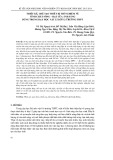
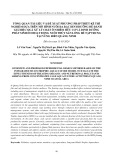


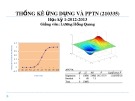

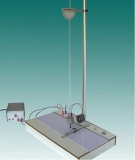


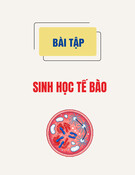

![Bài tập Đa dạng thế giới sống [kèm đáp án/ hướng dẫn giải]](https://cdn.tailieu.vn/images/document/thumbnail/2025/20251123/thaohoang9203@gmail.com/135x160/5861763951302.jpg)
